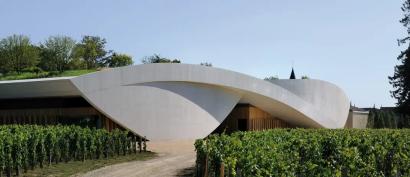
Cheval-Blanc’s reputation as a Grand Vin de Bordeaux rests principally on its sensational 1947 vintage, a wine of folklore and myth that is still invoked in contemporary literature and films. Its flagship status as a Premier Grand Cru Classé A (the suffix denoting the crème de la crème of Saint-Émilion wines) since the inception of the Official Classification in 1955 seemed unquestionable - that is until the estate’s sensational ‘withdrawal’ in 2021 (alongside Ausone and recently elevated Angélus).
The estate came into being in 1832, sired by Château Figeac whose then owner sold 15ha of land on a gravel ridge to the north-west of the Saint-Émilion plateau to Monsieur Laussac-Fourcaud, whose family retained ownership until 1998. Medals garnered by vintages from the new property in international exhibitions in the 19th century adorn the bottle label to this day.
Today, the vineyard comprises 37 hectares (planted) in a near contiguous plot, from which 56 individual sub-plots have been identified for vinification purposes. Unusually, the dominant red grape variety at Cheval-Blanc is Cabernet Franc (55%), with Merlot (40%) and Cabernet Sauvignon (5%). This varietal mix is almost unique in Bordeaux, certainly unsimilar to close neighbour, Pétrus (Pomerol) which uses 95% Merlot, and differing from Figeac on its southern flank, where the vineyard is planted to equal thirds of Cabernet Sauvignon, Merlot and Cabernet franc. There are, in addition, small plantings of Sauvignon Blanc and Semillon, applied to a recently introduced white wine, Le Petit Cheval Blanc.

Today Cheval-Blanc is owned solely by the family of Bernard Arnault (chairman of LVMH) who, in 2009, bought out the share of late Belgian magnate Albert Frère, co-owner since 1998. Arnault owns another Bordeaux icon, Chateau d’Yquem. Both estates are managed by the affable Pierre Lurton, a scion of Bordeaux’ Lurton dynasty and himself a château owner.
With the ample backing of its owners, Cheval-Blanc has expanded the estate via the integration of the 11 hectare La Tour du Pin Figeac (2022), itself once part of Château Figeac; it has built a substantial and striking chais adjacent to the château buildings; and it has installed a new fermenting hall replete with ultra-modern vinification equipment.
Recently, there has been a welcome push to increase biodiversity within the vineyard, and the well-marketed green credentials of the estate. This is apparent from the moment you set foot in the château, with their biodiversity brochures placed on tables in the waiting area, promoting agroecology. Cheval have uprooted small portions of vines, adding trees both small and large, hedging, other native plants and bee hives, in a drive to decrease monoculture and increase the health of the vineyard and support wildlife in the area.
Annual production is around 100,000 bottles, two-thirds grand vin and one-third of the second label, Le Petit-Cheval. Since the 2014 vintage, around 12,000 bottles annually of the white wine, Le Petit Cheval Blanc, are also made. There being no Saint-Émilion appelation for whites, this latter is labelled as Bordeaux Blanc.
Acknowledged great vintages
1947, 1990, 1998, 2009, 2015, 2020
